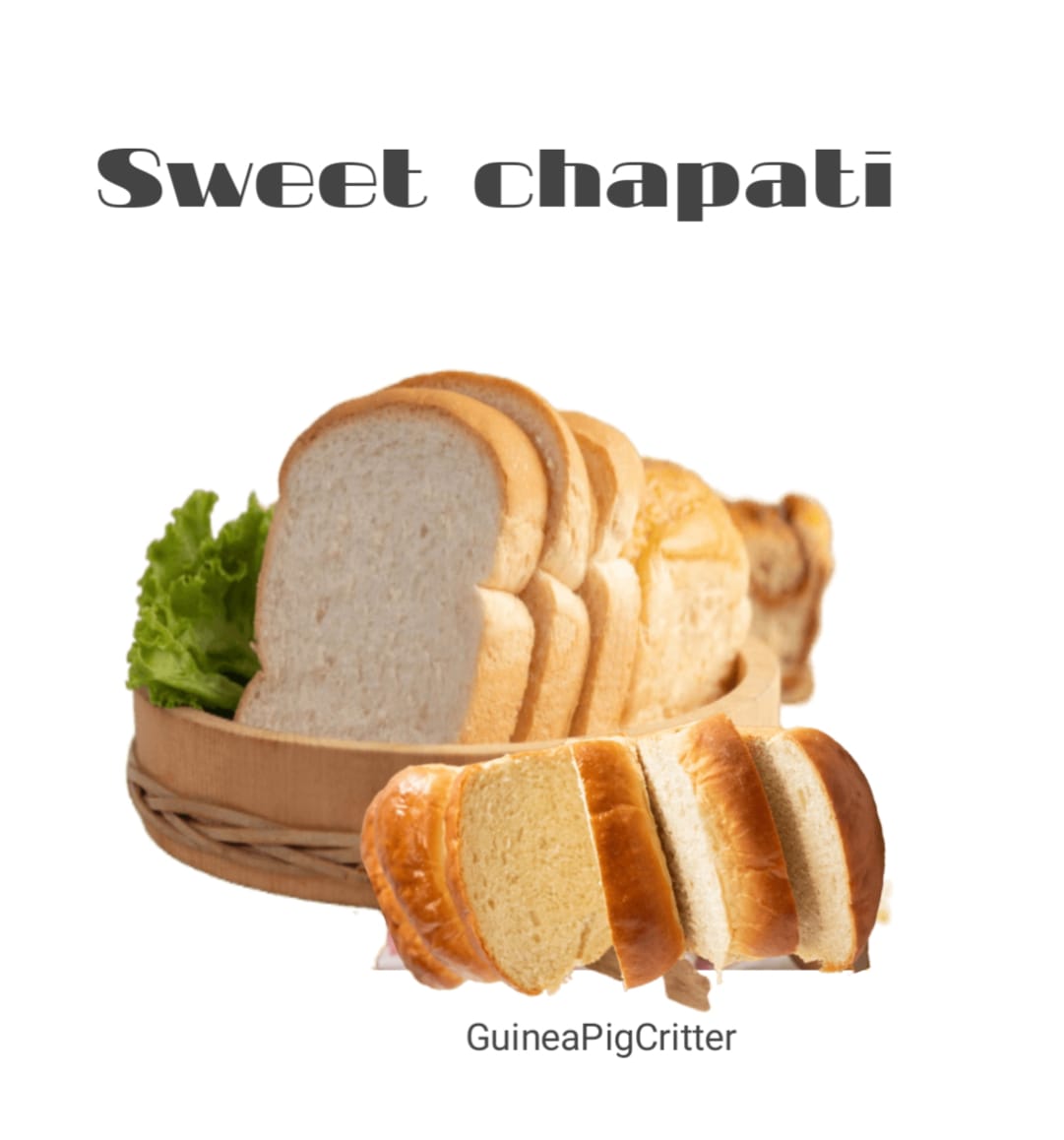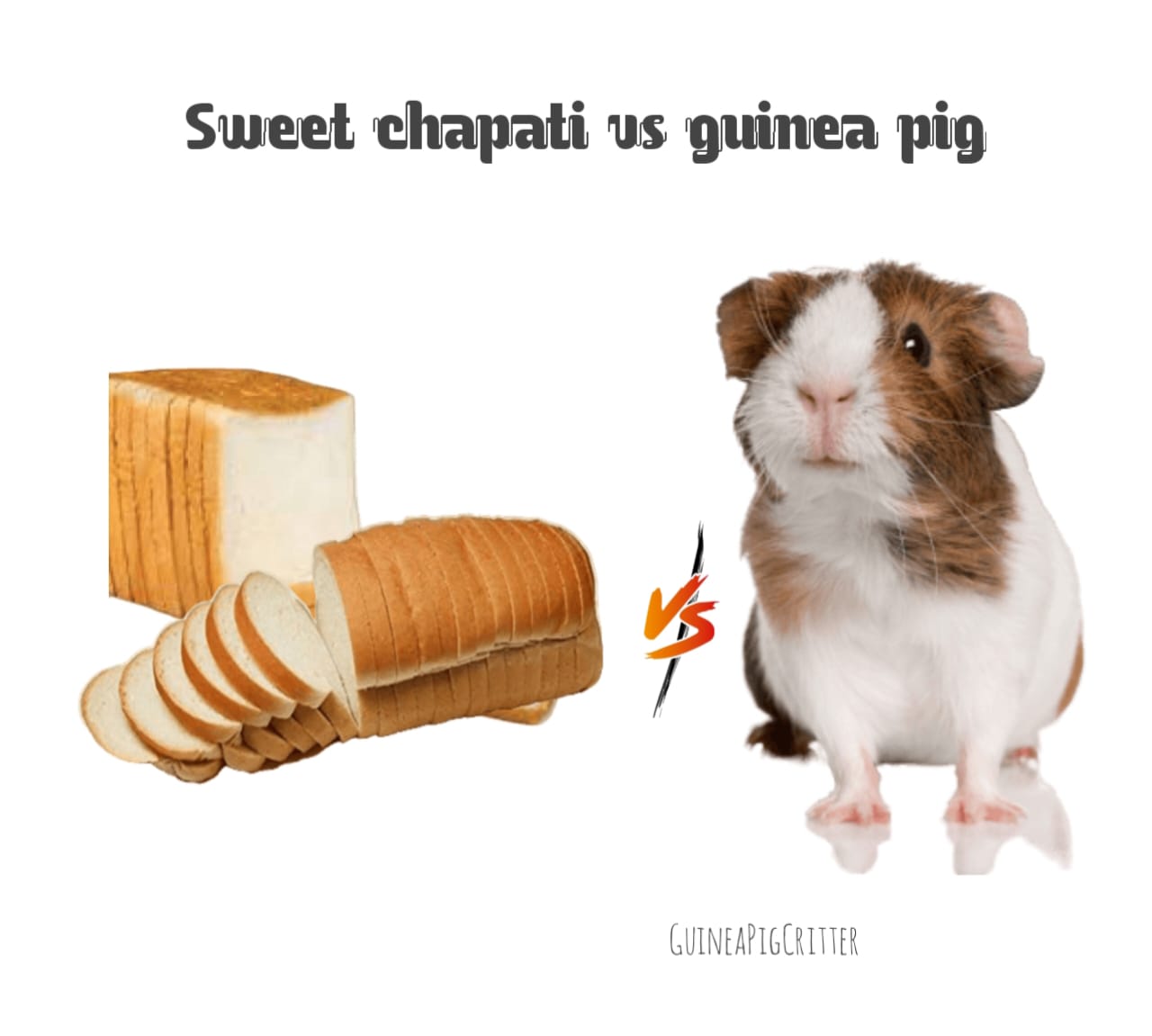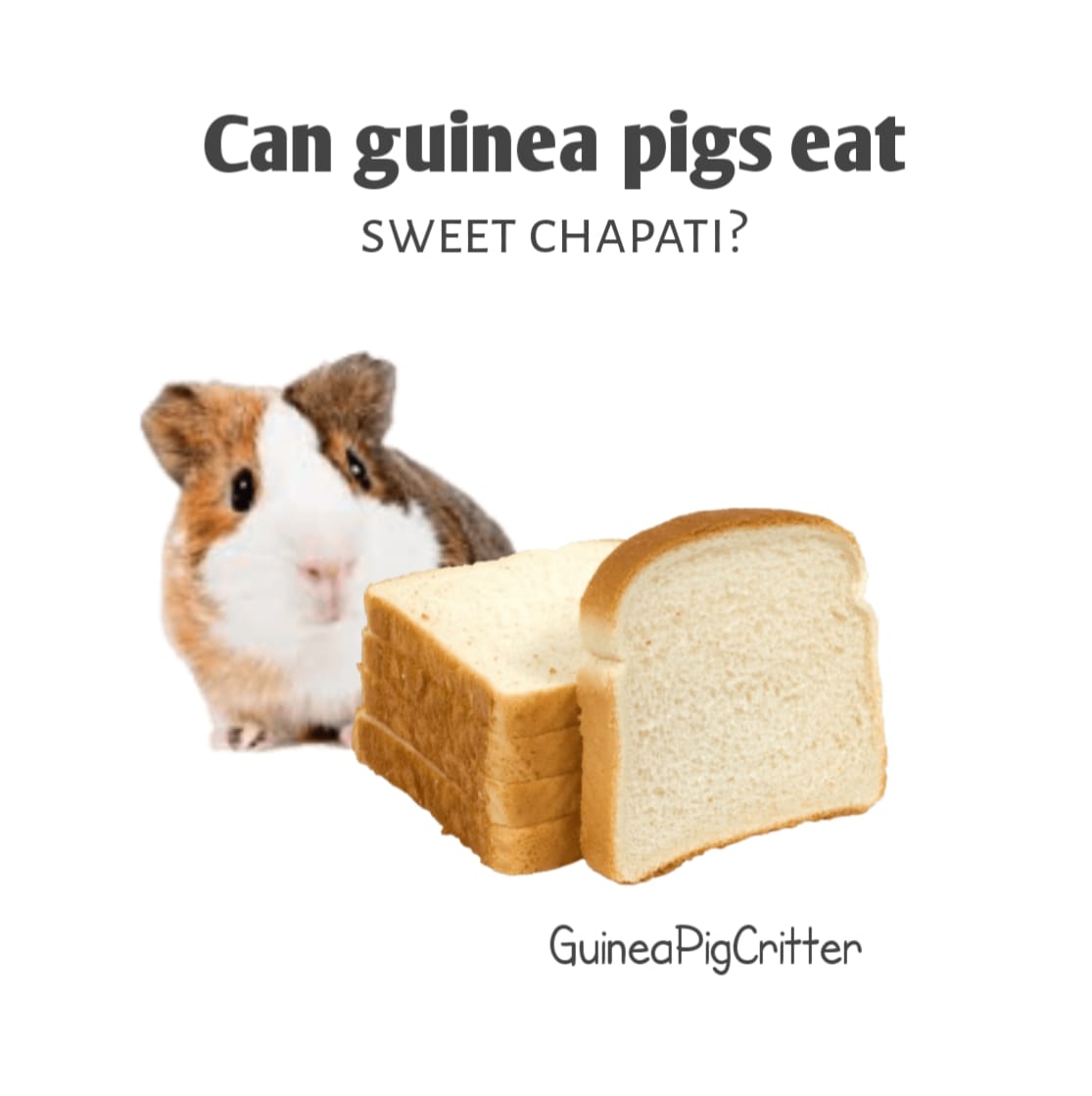Given that guinea pigs are naturally nosy and attention-seeking pets, it is essential to maintain a good variety of food. As with sweet treats that your guests enjoy, sweet chapati is great for your visitors and their gastric tract.
So, Today’s Question is:-Can Guinea Pigs Eat sweet Chapati?
Let’s look at the advantages, disadvantages, and better substitutes to promote your guinea pigs’ well-being without compromising their enjoyment!
Why do guinea pig owners want it: a sweetened everything stressed out.
Sweet chapati, on the other hand, is made with a little wheat flour and a lot of sugar. When sugar is added to bread, fat like butter or ghee makes it extremely unhealthy to eat as bread itself is easy to eat. Most people eat bread and vice versa so it is important to control the amount of sugar added while cooking bread as too much can lead to health problems.
Why give it to the guinea pigs in the first place?
To cement the relationship with their pets, a good number of pet owners have the habit of sharing little portions of food to their pets like sweet chapati. Of course, those guinea pigs appreciate some variety and the odd little treat. But as we will see in this article, not all human treats are healthy for guinea pigs.
Understanding the guinea pig diet: a basis of sound decisions
Guinea pigs have distinct dietary requirements that keep them healthy and invigorated. Let’s first look at the broad dietary aspects to know why sweet chapati is not advisable for them.
High fiber content
Among cavy foods, hay is undoubtedly the best as every guinea pig’s cavy diet should be made up predominantly of hay, as the fibrous food is advantageous to their hydrocarbon-rich dietary intake. Hay is important to keep guinea pigs’ teeth in check, which grow continuously and need to wear down naturally from fibrous foods.
Low sugar and fat
As you would expect, guinea pigs are not able to eat foods that contain a high amount of sugar and fat. Their systems are most suited for leafy greens, hay, and fresh fruits on the daily basis. Such high sugar and high fat content can deposit excess fat on organs and quickly lead to obesity and diabetes of these relatively small animals resulting in a very short life span.
Vitamin c
Interestingly, guinea pigs cannot synthesize their own vitamin c like humans do. Therefore, they should get vitamin c from external sources thereby avoiding liver damage. This is important as lack of it leads to scurvy disease which weakens a guinea pig’s immune system and even the bones.
Having understood these nutritional requirements, it is easy to see why sweet chapati should not be fed to guinea pigs.
Key ingredients in sweet chapati and their impact on guinea pigs
Similar to sweet chapati, yahoo can pose unique risks for guinea pigs. Here’s a closer look at why each of the common ingredients—flour, sugar, oil, or butter—may be unsuitable for them.
Flour
Refined wheat flour, which is the main component for chapatis, also does not cater so much towards the dietary needs of guinea pigs. It is deficient in necessary fiber and can lead to the chance of constipation or idiopathic flint that guinea pigs can suffer from due to their sensitive stomachs.
Sugar
Another risk associated with the sweet chapati is the inclusion of sugar, which is unnecessary. The most prevalent problem is excess weight because of excessive sugar consumption. Since guinea pigs are unable to metabolize sugar properly and efficiently, the sugar tends to build up within the organism and subsequently creates a vast array of health problems. Over time, sugar heavy diets could even lead to symptoms such as lethargy, changes in mood, or even a possibility of diabetes.
Oil, butter, or ghee
Sweet chapati does include a lot of fatty components such as oil, butter or ghee, but these are difficult to digest for guinea pigs. Just small levels of fat can make the gut feel unpleasant especially if taken for a long time and it makes the organs feel strained and most likely leads to weight gain and several other diseases associated with it.
Potential health risks and concerns: what happens if a guinea pig eats a sweet chapati?
If you have ever wondered about the implications of your guinea pig consuming sweet chapati, worry not. It would be best, however, to not give them sweet chapati on a regular basis as it may result in a few health complications down the road.
Digestive problems
Guinea pigs aren’t able to digest sweet products and starches. Because they have consumed food for which their stomachs are not prepared, they will have immediate signs of digestive distress that may include one or more of the following: diarrhea, gas and bloating, all of which are common in guinea pigs. If the bloating continues without any resolution, it should be brought to a veterinarian.
Weight gain and obesity
Weight gain or gaining pounds around the body in unwanted proportions is most often caused because of extras in the diet in the form of high caloric foods, like sweet chapatti. The consequences of obesity in guinea pigs are especially severe owing to their tiny frames because excess weight puts stress on their joints and diminishes their overall quality of life.
Increased risk of diabetes
For guinea pigs, diabetes is a serious issue that is very challenging to regulate. There are many possible signs, including increased water intake, excessive urination, and a drop in activity levels, as a result of high sugar.
Dental issues
On the contrary, there are no abrasives present in chapati and similar lamellar cereals that actively help in the wearing down of the teeth of guinea pigs similar to hay and other fibrous foods. Providing such non-fibrous foods regularly causes the teeth to grow longer in size, causing discomfort and difficulty in feeding the guinea pig.
Safe treat alternatives for guinea pigs
Although chapati may be sweet but unsuitable, there are a number of fun, safe options available for guinea pigs. There are a few nutrient-filled treasures to consider: leafy greens can be very nutritious when provided.
Leafy greens
Leafy greens lettuce, romaine lettuce, kale, spinach greens are all adequate because they contribute fiber, vitamin c, and other nutrients while helping to keep your guinea pig’s gut healthy.
Bell peppers
Bell peppers are not only rich in vitamin c but also come in many colors. They are a great snack and great fun to chew on for your guinea pig.
Fresh fruits (in moderation)
Fresh fruits like apples, strawberries, and blueberries can be given but sparingly. They are sugary by nature and a good substitute for the desserts.
Herbs like parsley and cilantro
The herbs provide a good treat that is also full of vitamins. Parsley and cilantro are safe and contain more vitamins that support your guinea pig’s diet.
How to care for guinea pigs who have consumed sweet chapati
In the scenario where your guinea pig has eaten sweet chapati, it is advisable to remain calm. You could do the following:
Observation of the affected pets
Watch out for any abnormal symptoms such as diarrhea or excessive bloating, and kittens being lazy than how they normally are. If these symptoms are noted, one may think of contacting a veterinarian.
Encourage hydration
It is important for your guinea pig to have fresh water in order to wash out any potentially harmful ingredients they might have consumed.
Provide high-fiber foods
Offering hay and leafy greens is a good way to stimulate their digestion. Foods that are rich in fiber help to stabilize their digestive processes and reduce the impact of sugary and fatty foods.
Conclusion: prioritizing the health of your guinea pig through proper diet
To finish off this article, you may be tempted to give your guinea pig a piece of sweet chapatti. It is however not recommended. The problem with refined flour, sugar and fats is that they are most unsuitable for the delicate mature digestive system of the guinea pig there also are a number of other health related issues that can be triggered.
So rather than seeking for the sweet chapatti, find alternative safe and nutritious treats. Make sure that these are in accordance with the natural diet of a guinea pig. After all, a happy guinea pig is a healthy guinea pig and proper nutrition is among the easiest ways to show your care and affection.

